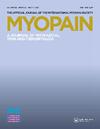Primary Aldosteronism with Rhabdomyolysis: A Case Report
引用次数: 0
Abstract
Abstract Background: Most cases of primary aldosteronisms present classic symptoms such as refractory hypertension, hypokalemia, elevated aldosterone and inhibition of renin, and angiotensin. However, some cases with rare clinical manifestations, such as skeletal muscle damage with elevated serum muscle enzymes [rhabdomyolysis], are more difficult to diagnose, and may result in a delayed clinical management. Findings: This paper reports a case of primary aldosteronism presented with rhadomyolysis due to severe hypokalemia. A 43-year-old male with a seven-year history of hypertension was admitted to the hospital with skeletal muscle weakness which he thought progressed rapidly over a period of four days, and resulted in quadriplegia for the preceding 12 hours. His laboratory tests showed hypokalemia [1.7 mmol/l] with elevations of serum creatine kinase and myocardial enzymes. An abdominal computed tomography revealed a 1.4 cm hypodense mass in the right adrenal gland, which suggested adrenocortical adenoma. He was treated with potassium and a laparoscopic adrenalectomy was performed. During one-year follow up, his blood pressure and serum potassium remained normal without the use of medications. Conclusions: The physicians should be aware of the potential for primary aldosteronism to cause severe hypokalemia and hypokalemic rhabdomyositis. That condition should be included in the differential diagnosis of muscle weakness.原发性醛固酮增多症伴横纹肌溶解1例
背景:原发性醛固酮增多症大多表现为顽固性高血压、低钾血症、醛固酮升高、肾素和血管紧张素抑制等典型症状。然而,一些临床表现罕见的病例,如骨骼肌损伤伴血清肌酶升高[横纹肌溶解],诊断难度较大,可能导致临床处理延迟。结果:本文报告一例原发性醛固酮增多症,并伴有严重低钾血症引起的横纹肌溶解。一名43岁男性,有7年高血压病史,因骨骼肌无力入院,他认为骨骼肌无力在4天内迅速发展,导致四肢瘫痪12小时。实验室检查显示低钾血症[1.7 mmol/l],血清肌酸激酶和心肌酶升高。腹部电脑断层显示右侧肾上腺一1.4 cm低密度肿块,提示肾上腺皮质腺瘤。他接受了钾治疗,并进行了腹腔镜肾上腺切除术。随访1年,血压、血钾均正常,未使用药物。结论:医生应该意识到原发性醛固酮增多症可能导致严重的低钾血症和低钾血症横纹肌炎。这种情况应包括在肌无力的鉴别诊断中。
本文章由计算机程序翻译,如有差异,请以英文原文为准。
求助全文
约1分钟内获得全文
求助全文

 求助内容:
求助内容: 应助结果提醒方式:
应助结果提醒方式:


